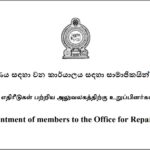Asian elephants once ranged from West Asia, through the Indian subcontinent, and all the way north to the Yangtze River in China. Today, there are less than 50,000 wild elephants found in only 13 countries across Asia.
Living on the most populous continent on the planet means that Asian elephants face the common threats of habitat loss and resulting human-elephant conflict across their entire range. To prevent further declines, addressing these and other threats are of paramount importance.
To further elephant conservation, WWF works in 11 range countries to support human-elephant conflict management, community engagement, elephant population assessments, radio collaring to understand elephant movement, and reducing impacts to elephants from linear infrastructure, among others. Join WWF’s Nilanga Jayasinghe to learn more about the various efforts to support Asian elephant conservation.
Nilanga Jayasinghe is a Manager on the Wildlife Conservation team at WWF, focusing on Asian species, particularly elephants, rhinos, tigers, and snow leopards, among others. She has nearly 20 years of extensive experience in international species conservation and has worked on conservation issues across the board in Asia, Africa, and North America.
Her areas of expertise include human-wildlife conflict, Asian elephants, strategic planning, connectivity conservation, protected area management, capacity building, and technological applications for wildlife conservation.
She is a member of the Asian Elephant Specialist Group (AsESG) and the Asian Rhino Specialist Group (AsRSG) under the International Union for the Conservation of Nature (IUCN) and the Species Survival Commission (SSC), and a member of the Connectivity Conservation Specialist Group under the IUCN’s World Commission on Protected Areas.
In her role, Nilanga works with WWF field teams and partners in more than 15 countries in Asia to further conservation efforts on the ground for WWF’s priority flagship species.
She provides technical support for species conservation and management efforts and mobilizes resources to accomplish conservation activities. In addition, she works with global partners to develop and implement initiatives that harmonize species conservation with broader conservation goals.












